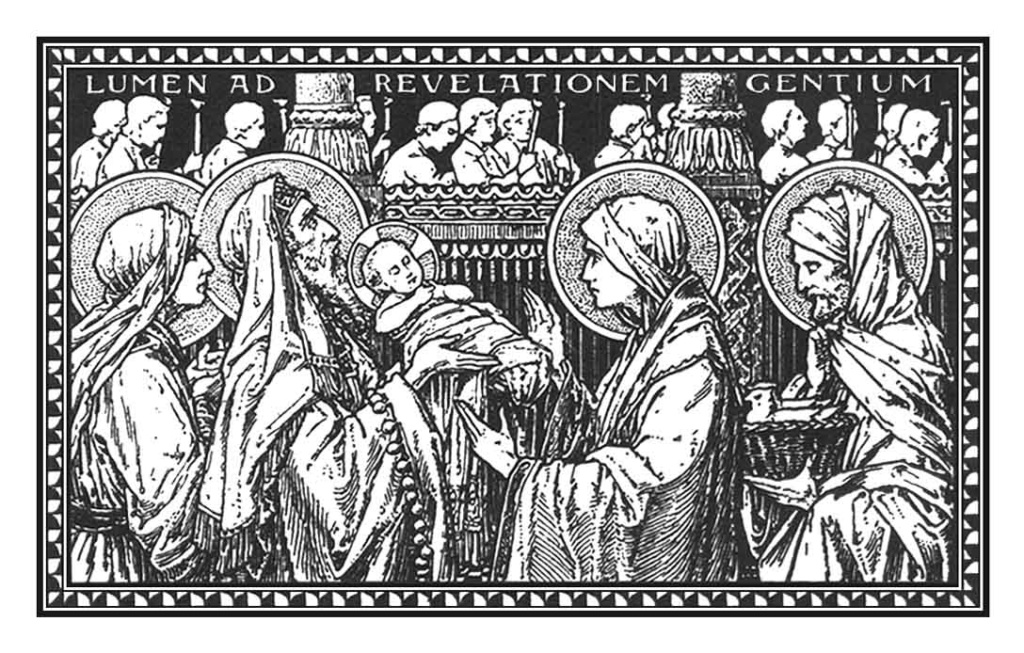The second day in February is the feast of the Presentation of the
Child Jesus in the Temple, which is also called the feast of the
Purification of the Blessed Virgin.
Forty days after His birth, Mary and Joseph brought Jesus to the
Temple of Jerusalem to present Him to the Lord as the law of
Moses prescribed. They carried with them the usual offering of the
poor, a pair of turtledoves. The law of Moses commanded that the
first-born male child should be offered to God in thanksgiving for
the sparing, by the exterminating angel, of the Israelites in Egypt.
The law also prescribed that on the fortieth day after the birth of
her child a mother should offer a sacrifice of purification from
legal stain; namely, a lamb and a young pigeon, or, should she be
poor, a pair of young pigeons or turtledoves.
At the time of the presentation and purification there was in the
Temple a just and God-fearing man named Simeon, who
recognized the infant Messias, and taking Him in his arms
declared Him the Savior, the Light of the Gentiles and the Glory
of Israel.
On the feast candles are blessed and carried in procession with
appropriate prayers and ceremonies. The blessed beeswax candles
typify the humanity which God the Son assumed, and signify that
Jesus Christ is the True Light of the world by His doctrine, grace
and example. They also represent the ardent faith, hope and
charity with which the Christian should follow Christ by humble
obedience to His Gospel and imitation of His virtues. Blessed
candles are lighted at Mass and other church services; at the
administration of all the sacraments except Penance; in imparting
blessings, in processions, and in other liturgical ceremonies. There
should be at least two blessed candles in every Catholic home for
use when the sacraments are administered to the sick, and at times
of special danger, blessing, or family devotion.
Lives of the Saints, page 61
